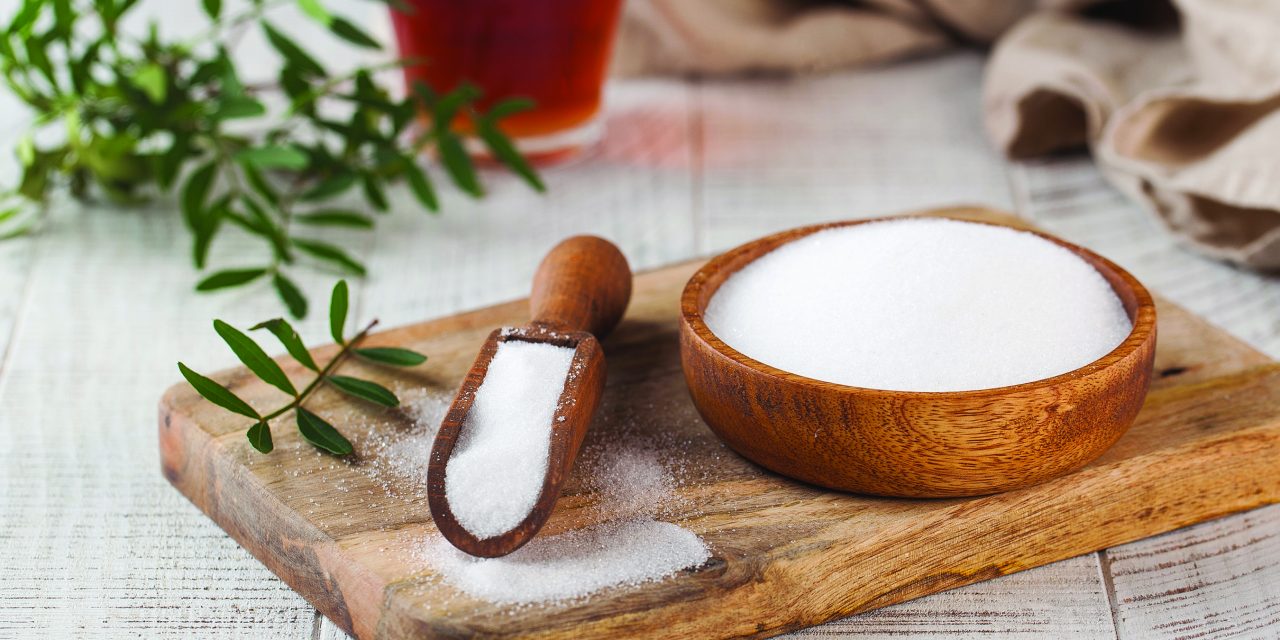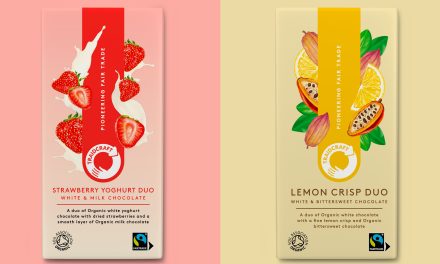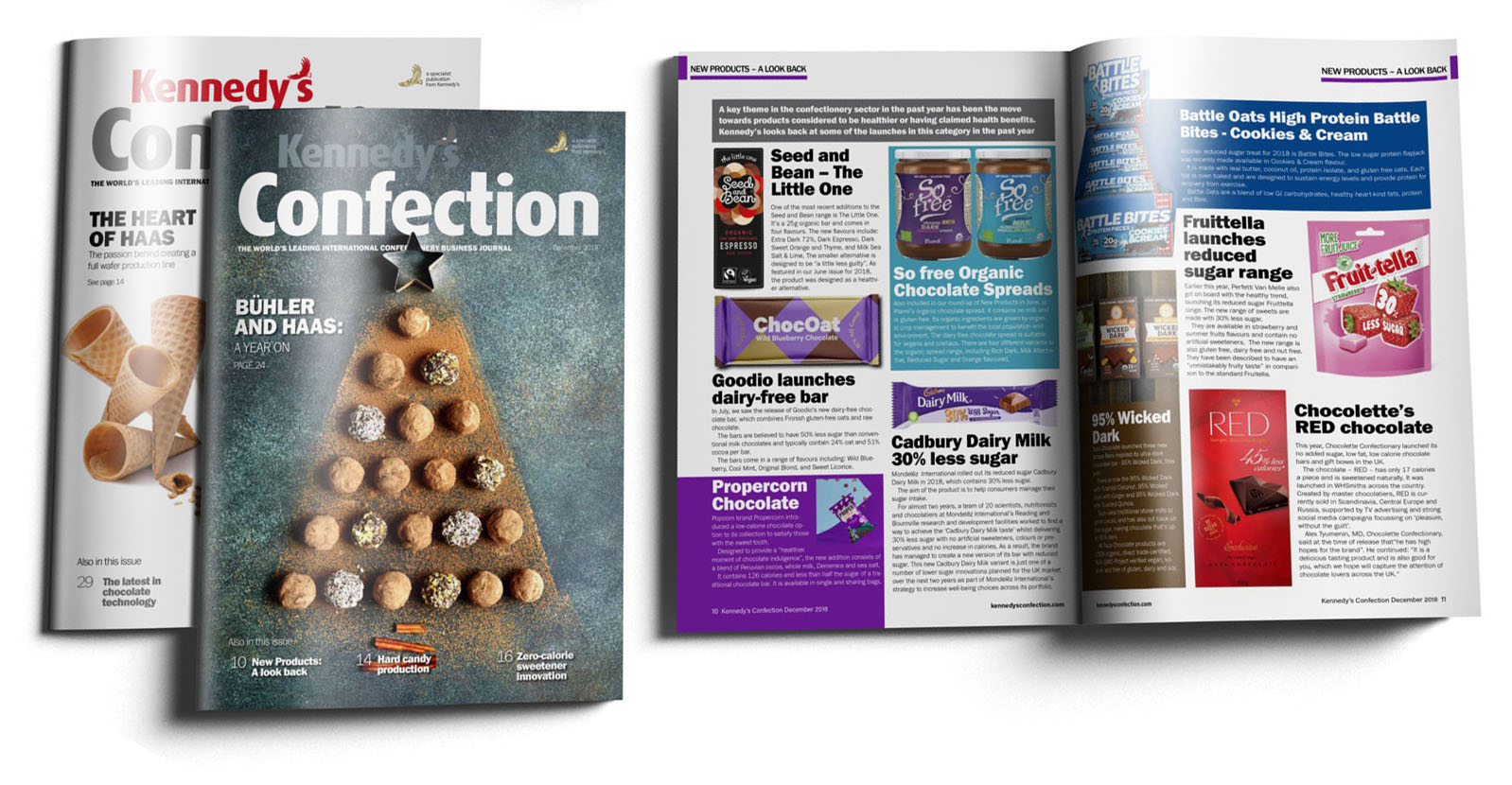From inulin to ashwagandha, what ingredients are adding health benefits to today’s confectionery offerings? Kiran Grewal reports.
Prior to COVID-19 snack choices were often shaped by the on-the-go lifestyle, today healthy snacking has become key to personal health at home. 7 out of 10 consumers wish they had healthier options in indulgent food and beverage categories and 61% say that health matters more than indulgence when choosing indulgent foods and beverages.
The first changes consumers plan to take to eat healthier are about avoiding the negatives and adding more of the positives, making sure to have enough vegetables, protein and fibre in the daily diet.
As consumer awareness of digestive health, immunity, the gut microbiome and its beneficial effect on overall wellbeing continues to grow, so does the demand for BENEO’s prebiotic and natural chicory root fibres. One can try to eliminate the sugar by dietary fibres (e.g. inulin). In this way, the negative consequences of high sugar consumption can be targeted and health-conscious consumers are addressed.
Globally, consumer interest in prebiotics continues to grow and has already seen an increase from 51% in 2018 to 61% in 2022, according to HealthFocus International, Global Trends Report 2018, 2022. To cater for this rising demand, BENEO opened a new refinery line in Pemuco, Chile, by the end of 2022, leading to a 15% increase of its total chicory root fibres capacity. This will be followed by an additional 15% increase due to be completed this spring, resulting in a total increase of 30%.
Chicory root fibres (inulin and oligofructose) are the only plant-based prebiotics. According to the International Scientific Association for Probiotics and Prebiotics (ISAPP), they belong to the very few proven prebiotics. The positive effects of chicory root fibres on bifidobacteria abundance in gut microbiota and on bowel function parameters have recently been demonstrated by a new systematic literature review with meta-analyses, considered the strongest methodology in the hierarchy of scientific evidence.
Alternatives to traditional sugar ingredients
Whilst consumers intend in adding more positives in their diet, this also means certain ingredients are to be steer-cleared of, and sugar is one of those. Confectionery often consists mainly of cane or beet sugar (sucrose) or other sugars such as glucose (dextrose), fructose (fruit sugar) or lactose (milk sugar). High amounts increase the calorie content and also put a strain on our organism due to excessive insulin secretion, a permanent weakening of the immune system, a negative influence on the intestinal flora, etc. To reduce or replace sugar, sugar substitutes (e.g. birch sugar (xylitol), stevia, erythritol, mannitol or isomalt) or natural sweeteners (e.g. agave, maple or rice syrup) and fruits (e.g. yacon, lucuma or dates) make for good alternatives.
Greet Vandeputte, Category Development Manager for Bakery, Beverages and Confectionery at Tate & Lyle Europe says: “Over the next 12 months, 56% of consumers want to reduce their sugar intake. This presents an opportunity for manufacturers who can quickly adapt to offer reduced sugar sweets and chocolates. However, reformulating confectionery products to reduce sugar without losing the qualities that make them so loved by consumers can be a difficult balancing act.”
There are other things to consider too. For example, when given the choice, more of us are looking for food that only contains natural ingredients. “There can be negative perception around artificial sweeteners, so where possible manufacturers should look for solutions from natural sources,” explains Greet.
“More than half of consumers agree that non-artificial sweeteners, such as stevia, are an acceptable solution to control sugar content,” she adds. “Stevia sweeteners can be used in combination with other stevia options or different sweeteners to achieve different taste profiles while maintaining a ‘clean’ flavour.”
In addition to increasing sweetness, some stevia extracts can also be used as flavours with modifying properties, which can subtly alter different flavours or reduce any unwanted tastes. They can be used alone or in combination with sweeteners to improve overall flavour quality, and reduce bitterness and linger, helping manufacturers to achieve the exact taste they need. In many cases these can also appear as simply ‘Natural Flavourings’ on labels, meeting consumer expectations in the ‘natural’ space.
Maintaining texture
When reducing or removing sugar or fats it’s not just the taste that needs to be compensated for – manufacturers need to think about the total sensory experience. “Sweeteners are generally used in lower quantities than sugar, which can impact texture and mouthfeel. However, manufacturers can use fibres and starches to build back mouthfeel and body when ingredients have been removed to create reduced calorie confectionery products, without any negative impact of taste or appearance” says Greet.
As well as its functional benefit during the manufacturing process, fibre can also increase consumer appeal as gut health becomes more of a focus. It is suggested that we consume 28 grams of fibre every day, but actual consumption is far below recommended levels due to a perceived lack of products with fibre. “By fortifying confectionery products with fibre, manufacturers can help consumers to increase their fibre intake without significantly altering their diet and make their products more appealing.”
We ask Holger Brack, Food Engineer MSc, Head of Product Technology Lab and Applications at WDS, why he believes healthier confectionery is a growing trend, he responds: “Nutrition is a basic need and is primarily based on origin, upbringing, life milieu, traditions and religion, and thus less on activity and need. We are born with an affinity for sweets. The consumption of sweets takes place out of emotional impulse, mostly in the form of enjoyment or a personal reward.
“Due to the general creeping loss of exercise and the parallel increase in digital communication in our daily and professional lives, far fewer calories are consumed per day today than in earlier times. The result is an increase in body weight and obesity,” he explains.
“With the knowledge of the negative consequences, this worrying trend has triggered a counter-trend in the food and confectionery industry. This is increasingly supported by the industry, advertising and also by the population, says Holger. “The transparency of calorie and energy information, the return to natural raw materials and the reduction of carbohydrates, especially sugar, have led to the development of completely new products that are much healthier from a nutritional point of view and have less of an effect on the sugar metabolism. Sweets do not have to be unhealthy!”
Plant based ingredients
Many confectionery products are composed exclusively of vegetable raw materials. However, raw materials of animal origin are found, for example, in fruit gums with gelatin. “As a binder, gelatin is largely responsible for the elastic structure. However, it can be replaced by other vegetable binders such as pectin, starch, agar or carrageenan. In chocolate, the milk components are often replaced by almond products, for example. Milk-based whipping agents are increasingly being replaced by pea protein with an equivalent degree of aeration,” says Holger.
The share of vegan products is strongly increasing. “Nature offers numerous alternative raw material sources, which, with the application of a target-oriented technology, delivers amazing results,” he adds.
The market share of vegan or vegetarian products, some of which also include dietary supplements, is growing steadily. A downturn is not to be expected. “Consumers have become more critical, so that nutrition tables and ingredient lists are increasingly read. In times of climate protection, fair trade and sustainability, the health aspect is increasingly being considered when snacking,” says Holger. With the still voluntary Nutri-Score on some foods as a guide to a balanced diet, the pressure on the confectionery industry to reduce the sugar content and improve the natural raw material characteristics is also generally increasing.
A natural move into the nutraceutical industry?
Confectionery in the form of fruit gums and jellies is already used as a carrier material for pharmaceutical products. In the over-the-counter (OTC) sector, more and more new products are appearing. The range of products has become extremely wide: vitamins in various compositions, minerals, trace elements, omega-3 fatty acids, stimulants or sedatives, cannabis, melatonin, collagen and many more. “This turns the small confectionery into a ‘modern tablet’. A trend that has already taken on considerable proportions in the USA. It is a question of a few years until this will also reach similar dimensions in Europe,” Holger notes. With the division “sweetOTC” WDS responds to these new trends, supplying technologies and machines for the production of actively effective OTC sweets and supplements.
Darling Ingredients’ Health Brand, Rousselot, recently announced that the U.S. Patent and Trademark Office (USPTO) has received U.S. Patent No. 11,490,634, securing Rousselot’s intellectual property for SiMoGel™, a gelatin technology that eliminates the need for starch-based gummy production. SiMoGel allows for the production of nutraceutical gummies using silicon or metal moulds, which are easily cleanable and eliminate dust during production, unlike traditional starch trays.
In November 2021, the company also received a patent from the European Patent Office (EPO) for SiMoGel for all major European countries. “Because of taste, convenience and effectiveness, functional gummies are one of the fastest growing nutraceutical segments across Europe, North America and Asia,” said Pierre-Albert Thomas, Director of Rousselot Functional Ingredients. “Darling Ingredients’ Rousselot team has been on the cutting edge of developing world-class, gelatin-based solutions. Receiving patents from both the U.S. Patent and Trademark office and the European Patent Office is a testament to our commitment to new and improved customer gelatin-based formulations.”
According to Future Market Insights, the nutraceutical gummy market grew at a compound annual growth rate of 12.5% from 2016 to 2020 and is forecasted to grow 15% compounded annually from 2021-2031.
TopGum Industries Ltd. debuted their latest offering of sugar-free, organic gummies to the nutritional health supplement category late last year. The curated collection of five gummies includes gummies that deliver a range of ingredients such as the B-vitamin Biotin, Vitamin D, and a delicious antioxidant balanced berry blend. TopGum’s new line also includes flavour-challenging ingredients like Zinc and Ashwagandha, making them more palatable for everyone to enjoy. According to Top Gum’s VP of R&D and Open Innovation, Amit Hyzkihu, precision is the key to the new delivery system that makes sugar-free claims and organic certification possible. “Ticking the boxes that customers expect like sugar-free, and organic and keeping the flavour palatable is highly complex,” says Hyzkihu.
“Developing the delivery system requires a highly intricate process of sourcing the right materials, handling the active ingredients with care, and knowing how they will react to the gummy process are especially important, as well.”
TopGum developed the innovation that made the sugar-free delivery system possible without using sugar, sweeteners of any kind, or sugar alcohols, instead relying on the natural sweetness of the ingredient in the matrix of the gummies to provide a delicious taste experience.
The new line of gummies is a clear demonstration of TopGum’s agility in gummy supplements, having just announced this summer their designation of the company as a USDA-certified organic manufacturer. The highly sought-after certification calls attention to TopGum’s adherence to the strict standards of the National Organic Program for producing and bottling organic products.
“Our organic-certified gummies are the next evolution in high-end supplementation,” explains Amichai Bar Nir, CEO of Top Gum. “Although they contain no additional sweeteners, they still deliver the same sensory enjoyment of a traditional sugar-sweetened gummy, but without the sugar. “We want our customers to be able to look forward to taking their supplements. Pills and capsules are not as much fun as enjoying a gummy that’s both delicious and good for you.”
The new line joins TopGum’s catalogue of nutraceutical-enriched gummies that are marketed as private-label supplements. TopGum also offers custom formulations to supplement brands looking to formulate and offer gummies with their own ingredients. Using TopGum’s service, brands can take advantage of the growing gummy market faster than if they had to develop the technology on their own.
The gummy delivery system has been capturing the nutraceutical market, having growth markers that show the gummy is fast becoming the consumers’ favourite way to take their vitamins.
“The launch of this line is only the beginning,” Hyzkihu says. “High dosages, exotic botanicals, if you can dream it, we can deliver it in a delicious gummy.”
Editorial contact:
Editor: Kiran Grewal kgrewal@kennedys.co.uk







